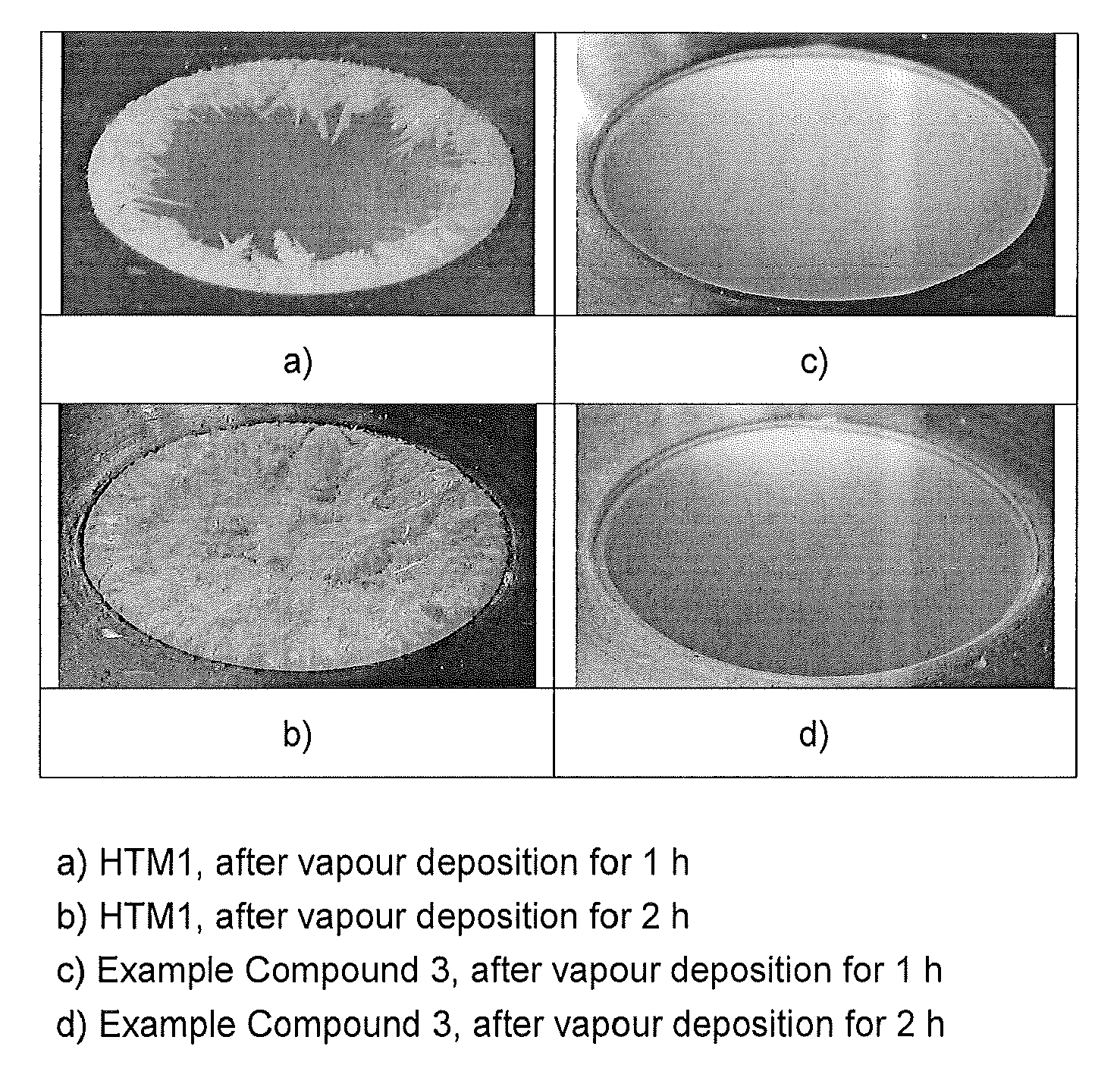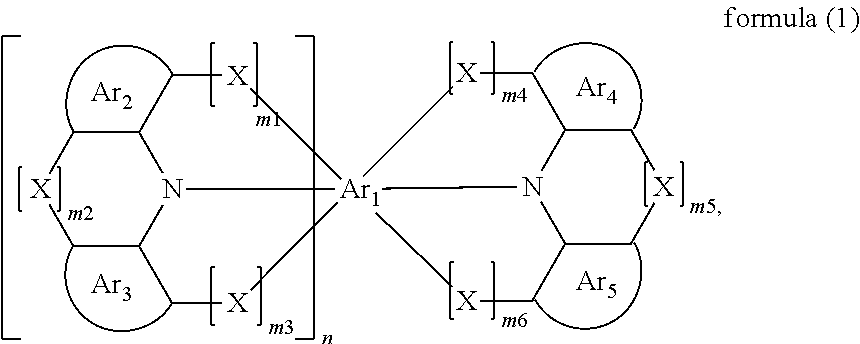Compounds for electronic devices
- Summary
- Abstract
- Description
- Claims
- Application Information
AI Technical Summary
Benefits of technology
Problems solved by technology
Method used
Image
Examples
working examples
[0101]The following syntheses are carried out, unless indicated otherwise, under a protective-gas atmosphere in dried solvents. The starting materials can be purchased from ALDRICH.
example 1
Synthesis of Example Compound 1
a) Bis[N-(2-carboxymethylphenyl)]-6,6,12,12-tetramethyl-6-12-dihydroindeno[1,2b]fluorine diamine
[0102]
35.51 g (234.9 mmol) of methyl anthranilate are dissolved in 500 ml of toluene, and the solution is thoroughly degassed. 50.0 g (106.8 mmol) of 6,6,12,12-tetramethyl-6-12-dihydroindeno[1,2b]fluorenyl dibromide, 2.1 g (10.7 mmol) of 4,5-bis(diphenylphosphino)-9,9-dimethylxanthene, 1.19 g (5.34 mmol) of Pd(OAc)2 and 76.5 g (234.9 mmol) of Cs2CO3 are added, and the mixture is subsequently degassed and stirred at 100° C. under a protective-gas atmosphere for 24 h. The solids are subsequently filtered off through Celite, and the organic phase is washed with water, dried over MgSO4 and evaporated. The crude product is washed by stirring with hot heptane, giving 56 g (86%) of the product as a yellow solid.
b) Bis[N-(2-(1-methyl-1-hydroxyethyl)phenyl)]-6,6,12,12-tetramethyl-6-12-dihydroindeno[1,2b]fluorine diamine
[0103]
56.0 g (92.0 mmol) of the compound from a)...
example compound 1
d) Example Compound 1
[0105]
50.0 g (87.3 mmol) of the bisacridine from c) and 34.75 ml (261.8 mmol) of bromobenzene are dissolved in 2500 ml of degassed toluene, and the solution is then degassed. Tri-tert-butylphosphine (6.11 ml, 1M solution in toluene) is added, 685.9 mg (3.05 mmol) of Pd(OAc)2 and 25.1 g (209.4 mmol) of sodium tert-butoxide are added, and the mixture is then briefly degassed and heated under reflux for 3 h. The reaction solution is washed with water, and the precipitated solid and the organic phase are combined, evaporated and dried azeotropically a number of times using toluene, giving 49.1 g (77%) of a yellow solid, which is purified further by means of Soxhlet extraction and crystallisation from NMP.
PUM
| Property | Measurement | Unit |
|---|---|---|
| Mass | aaaaa | aaaaa |
| Fraction | aaaaa | aaaaa |
| Electric potential / voltage | aaaaa | aaaaa |
Abstract
Description
Claims
Application Information
 Login to View More
Login to View More - R&D
- Intellectual Property
- Life Sciences
- Materials
- Tech Scout
- Unparalleled Data Quality
- Higher Quality Content
- 60% Fewer Hallucinations
Browse by: Latest US Patents, China's latest patents, Technical Efficacy Thesaurus, Application Domain, Technology Topic, Popular Technical Reports.
© 2025 PatSnap. All rights reserved.Legal|Privacy policy|Modern Slavery Act Transparency Statement|Sitemap|About US| Contact US: help@patsnap.com



